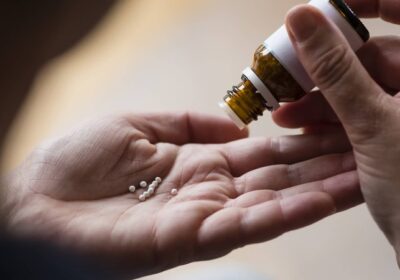
The Importance of Regular Testicular Self-Exams
Testicular cancer, though relatively rare, is a significant concern among men, particularly affecting those in younger age groups. It originates in the testicles, which are part of the male reproductive system housed in the scrotum below the penis. This type of cancer is notable for its high treatability, especially when caught early.
What is Testicular Cancer?
Testicular cancer occurs when abnormal cells in one or both testicles begin to grow uncontrollably, forming a mass or tumor. The two main types are seminomas, which grow slowly and are sensitive to radiation therapy, and non-seminomas, which are more common and grow more rapidly.
Risk Factors for Testicular Cancer
Several factors can increase the risk of developing testicular cancer, including:
- Undescended testicle(s) (cryptorchidism)
- Family history of testicular cancer
- Age, particularly affecting men between ages 15 and 35
- Race, with higher rates observed in Caucasian populations
Statistics and Prognosis
Testicular cancer represents about 1% of all cancers in men but is the most common cancer in men between 15 and 35 years old. The prognosis for testicular cancer is generally favorable, with a five-year survival rate exceeding 95% when detected early. This highlights the critical importance of awareness and early detection strategies.
Benefits of Regular Testicular Self-Exams
Regular testicular self-exams are crucial for early detection of abnormalities, which can be pivotal in improving outcomes through early intervention. By conducting these exams routinely, individuals empower themselves with greater personal health awareness.
- Early Detection of Abnormalities: Regular self-exams help individuals identify any unusual lumps or changes at an early stage. This early detection is key in managing potential health issues before they develop into more serious conditions.
- Improving Outcomes Through Early Intervention: When abnormalities are detected early, the chances of successful treatment increase significantly. This can lead to better health outcomes and a reduced risk of complications.
- Empowering Personal Health Awareness: Performing regular self-exams boosts an individual’s knowledge and attentiveness towards their own body. This empowerment can lead to more informed decisions regarding health and lifestyle, enhancing overall well-being.
How to Perform a Testicular Self-Exam
Best Time for Examination
The best time to perform a testicular self-exam is after a warm bath or shower, when the scrotal skin is most relaxed. This makes it easier to
Step-by-Step Guide
- Stand in front of a mirror and look for any swelling on the scrotal skin.
- Examine each testicle with both hands. Place the index and middle fingers under the testicle with the thumbs placed on top.
- Gently roll the testicle between the thumbs and fingers — you shouldn’t feel any pain when doing this.
- Feel for any lumps, bumps, or changes in the size, shape, or consistency of the testicles.
Common Findings and What They Mean
Most findings are benign, such as small cysts or benign lesions. However, if you find a firm, painless lump, notice a change in the size or shape of a testicle, or experience discomfort, it’s important to consult a healthcare provider promptly for further evaluation.
Common Symptoms and When to See a Doctor
Recognizing the symptoms of testicular issues is crucial for timely medical intervention. Some common symptoms include a lump or swelling in either testicle, a feeling of heaviness in the scrotum, or a dull ache in the abdomen or groin. Additionally, any pain or discomfort in the testicles or scrotal area should prompt a consultation with a healthcare provider.
Timely medical consultation is essential when these symptoms are observed. It is important not to delay seeking medical advice as early diagnosis can significantly improve the prognosis of testicular conditions. Men should be proactive in addressing any changes they notice and discuss them with their doctor without hesitation.
Distinguishing between normal and abnormal findings can be challenging. Normal variations often do not cause sudden changes or discomfort. However, any new developments such as lumps, persistent pain, or changes in the size and shape of the testicles should be evaluated by a professional.
The Role of Healthcare Providers in Testicular Health
Healthcare providers play a crucial role in maintaining and promoting testicular health. Regular medical check-ups are essential for early detection of potential health issues. During these visits, healthcare professionals can perform thorough examinations, which are vital for assessing the health of the testicles and identifying any abnormalities early on. Discussing concerns with your doctor is also critical. It allows individuals to express any worries they may have about changes in their testicular health, ensuring that any potential issues are addressed promptly. By maintaining open communication with healthcare providers, individuals can ensure they receive the best possible care and advice for maintaining testicular health.
Lifestyle Factors and Testicular Health
Diet and Exercise
A balanced diet rich in fruits, vegetables, and lean proteins can help maintain overall health and support the proper functioning of all body systems, including the reproductive system. Regular physical activity is also crucial in maintaining a healthy weight and improving blood flow, which can positively impact testicular health.
Impact of Smoking and Alcohol
Smoking and excessive alcohol consumption can negatively affect testicular function and overall reproductive health. Reducing or eliminating these habits can significantly improve testicular health and reduce the risk of related health issues.
Preventative Measures
In addition to a healthy lifestyle, regular medical check-ups are essential for maintaining testicular health. Wearing appropriate protective gear during sports and avoiding exposure to toxins can also help prevent injuries and other conditions that could affect the testicles.


















